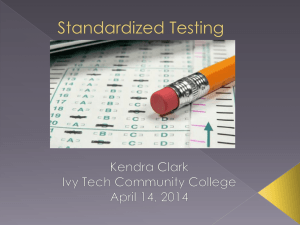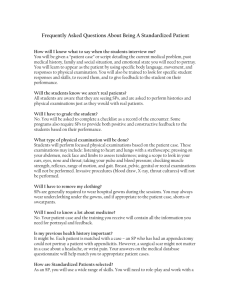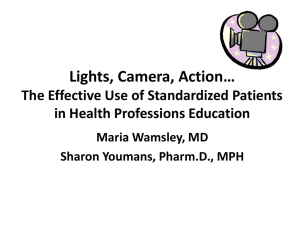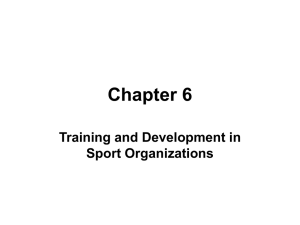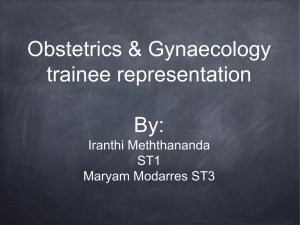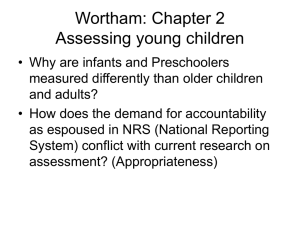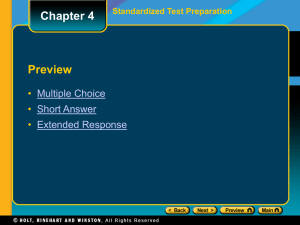Standardized Patient presentation
advertisement
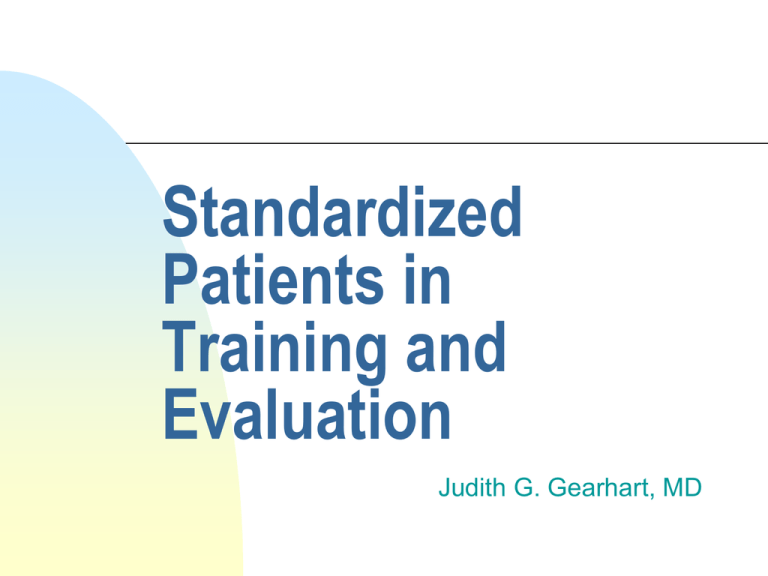
Standardized Patients in Training and Evaluation Judith G. Gearhart, MD Our Objectives Define simulations Discuss applications Observe examples Examine opportunities for standardized cases to enhance employee performance Create a case framework Collaborate Topics of Discussion Background and terms Standardized patients in teaching Standardized patients in evaluation Developing scenarios and checklists Resources Background “Nothing new under the sun” (1916-1963) Standardized patients and OSCE used since the 1970s in teaching and evaluation Incorporated into the USMLE in 2005 Step 2CS Exam Definitions Standardized Patients (SPs): “actors” trained to simulate a patient in a clinical presentation and to give trainees feedback on performance Definitions (cont’d) Virtual patients: online cases paper cases Simulators: models manikins Definitions (cont’d) OSCE (Objective Structured Clinical Exam): An examination assessing trainee performance in a simulated clinical setting using standardized patients and cases Uses objective checklists to determine whether trainee performs desired competencies Also known as: CPX (Clinical Performance Exam, Clinical Practice Exam) PBA (Performance-Based Assessment) CSA (Clinical Skills Assessment) Definitions (cont’d) OSTE Objective Structured Teaching Exam Advantages of SPs Validity Availability Reliability Controllability Adaptability Minimal risk Feedback Extension of faculty Uses of SPs Education : Teach specific skills (interview, history & physical, diagnosis, management, procedures, professional behaviors) Provide exposure to clinical problems Teach how to deal with important issues (cross-cultural issues, ethics, delivering bad news) Uses of SPs (cont’d) Provide opportunities to meet educational objectives regarding variety and type of clinical problems Provide cases trainees should, but might not see without planning Give trainees feedback Evaluate teaching methods Uses of SPs (cont’d) Evaluation of trainees Informal assessment and feedback (ungraded, “low-stakes”, pass/fail) Formative or final assessment for grade (with or without feedback) Assessment to determine progression to next level or licensure (“high-stakes”) Other uses Admissions of med trainees or residents OSTE (Objective Structured Teacher Examination) Human Resources Practicing Physicians Human Resources Issues Hospitality receiving, registration, information giving, telephone etiquette Confidentiality Team interaction Professionalism Things SPs Can Do Act out scenarios (history, physical, need for counseling or information) Simulate physical findings Use checklists developed by faculty to evaluate trainees objectively Give trainees feedback Physical Findings that Can Be Simulated Abdominal tenderness Asterixis Carotid bruits Confusion Dilated pupil Gait abnormalities Hyper/hypotension Jaundice Sensory losses Sputum production Wheezing, asymmetrical BS Prior Development of UMC SP Program Recruiting, screening, training patients to act out scenarios Training patients to give feedback Maintaining the standardized patient pool Working out remuneration Use of facilities Development of UMC Standardized Patient Program (cont’d) Creating scenarios and checklists Accessing those already available Scripting from patient/employee encounters you’ve had Scripting case for objectives Developing Cases and Checklists First, determine objective for case teaching, evaluation, or combination teaching/evaluating what skill? Developing Cases and Checklists (cont’d) What skill(s)? Adapt for level of trainee Adapt for time frame Put in context of curriculum map or institutional goals Developing Cases and Checklists (cont’d) Next, create the case (scenario) Access those already available Script from patient/employee encounters you’ve had Developing Cases and Checklists (cont’d) Identify minimal competencies/ behaviors/questions List in appropriate sequence Be specific Use language that an SP will understand Examples Patient asks for directions/clinical information from employee who doesn’t know the answer Employee encounters angry patient Procedures (venipuncture checklist) Model/mannequin cases (Sim center) Examples Admitting medical error Obtaining informed consent Delivering bad news Telephone triage Patient safety Summary Using Standardized Patients can increase learning opportunities through structured cases Using standardized cases can provide another perspective of trainee performance provide an objective rather than subjective, measure of skills Resources Bibliography Web sites Organizations Clinical Procedures and Simulation Center Clinical Skills Center Resources ASPE (Association of Standardized Patient Educators) www.aspeducators.org Individual or institutional membership fee Casebank Society for Simulation in Health Care www.ssih.org Multiple membership, individual, active, retired, student, resident fee Free without journal
